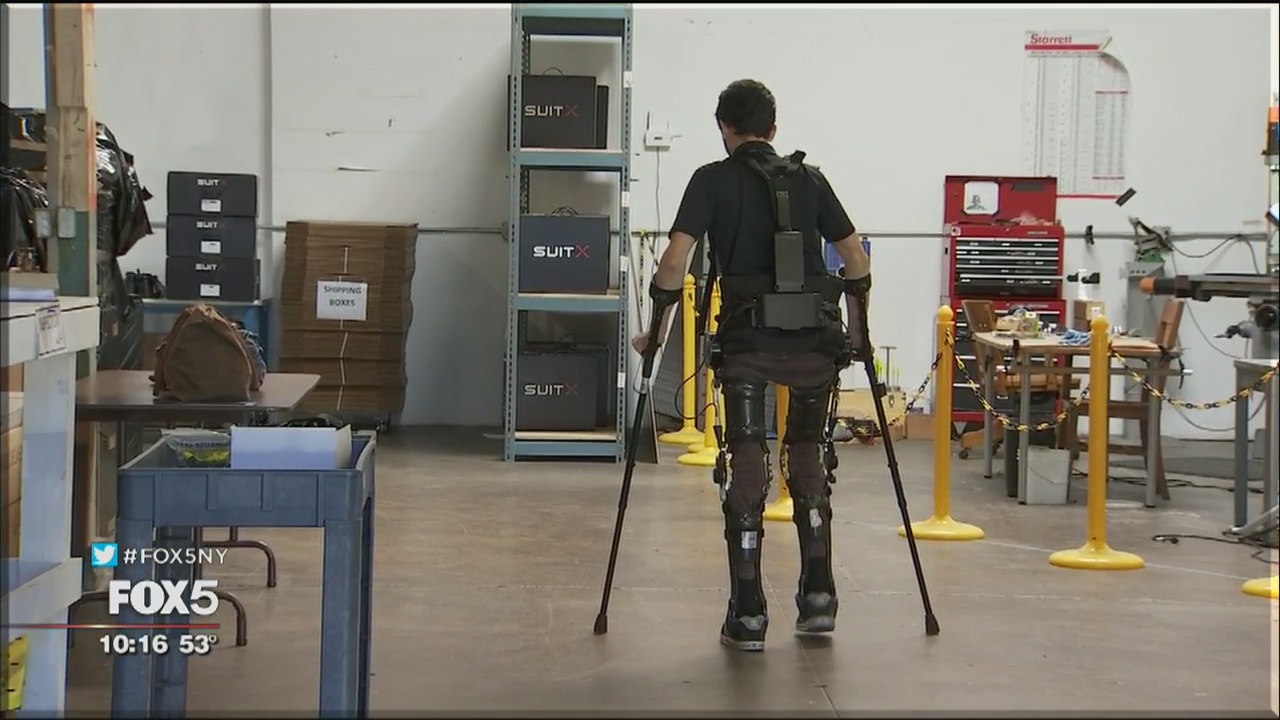Robotic suits that change lives

Suits that change lives
What is happening inside the walls of a company called Suit X is changing lives. The company was co-founded by Homayoon Kazerooni, an engineering professor at the University of California-Berkeley who has been developing exoskeletons since the early 2000s. One device the company is testing is called the Phoenix exoskeleton.
CALIFORNIA (FOX5NY) - Steven Sanchez grew up just outside of San Francisco. One summer day before his senior year of high school, everything changed. During a BMX bike jump, Steve landed on his back and broke his spine, making him a paraplegic at 17.
Being in a wheelchair is a whole new lifestyle, he says. That is something Steve's girlfriend Ashley, who he shares an apartment with, knows all too well. She is also a paraplegic and knows what it is like to live life in a wheelchair.
Steve drives himself an hour every day to get to work. The office is in a very nondescript building. It is called Suit X. What is happening inside these walls is changing lives.
From a wheelchair to standing upright to walking. Steve is in charge of quality control and is the chief pilot of the Phoenix Exoskeleton. He says wearing the suit feels great.
The company was co-founded by Homayoon Kazerooni, an engineering professor at the University of California - Berkeley who has been developing exoskeletons since the early 2000s.
"The idea was to create a better quality of life for people with mobility disorders," Kazerooni says.
The engineers produce a number of different devices, including the Phoenix. It isn't yet on the market because the Food and Drug Administration is still considering whether to approve it. But Kazerooni expects approval to come early next year.
The company is made up of 30 employees focused on keeping infrastructure and cost at a minimum.
The office, which is an old warehouse, has a relaxed Cali vibe. All of the engineers at Suit X are former students of Kazerooni's at Berkley. 40 percent of the engineers are women like Yoon Jeong, who is also one of Suit X's co-founders. Yoon has spent the past seven years building the hip motors of the Phoenix exoskeleton.
Less machinery means a lower price tag for the consumer. Kazerooni says he thinks the price of the suit could come down to $15,000 to $20,000 – about the price of a powered wheelchair.
Michael McKinnely, another co-founder, developed the prototype for the Phoenix Exoskeleton and has worked with Steve for the past five years, perfecting the robot. McKinley says the system is comprised of a computer, which controls hip motors and knee actuators.
Jim Burnett is still learning how to use the Phoenix. He is one of 25 subjects who travel to Suit X every week to work with a physical therapist and learn how to use the prosthetic robot. He said having something like this system at home every day would be fantastic.
Suit X is also working to bring robots to able-bodied people. I tried the Back X, which does not require FDA approval and is already selling for $3,000. With the flip of a switch, the device gives the user superhuman strength.
Nate Poon, the project leader for Back X, explains that the device's torque generators work with your body to push you up so your back muscles aren't lifting as hard.
Kazerooni says that combing a human and robot is by far more productive in many situations than just a robot.
Steve knows that because he lives it and can't imagine a future without one. He says being in the suit raises his confidence, energy, and awareness of his body.
A number of Fortune 500 companies in the automobile, construction, and shipping industries have purchased hundreds of robotic-assistant devices from Suit X. The company also recently won $1 million prize in an international robotics competition.

